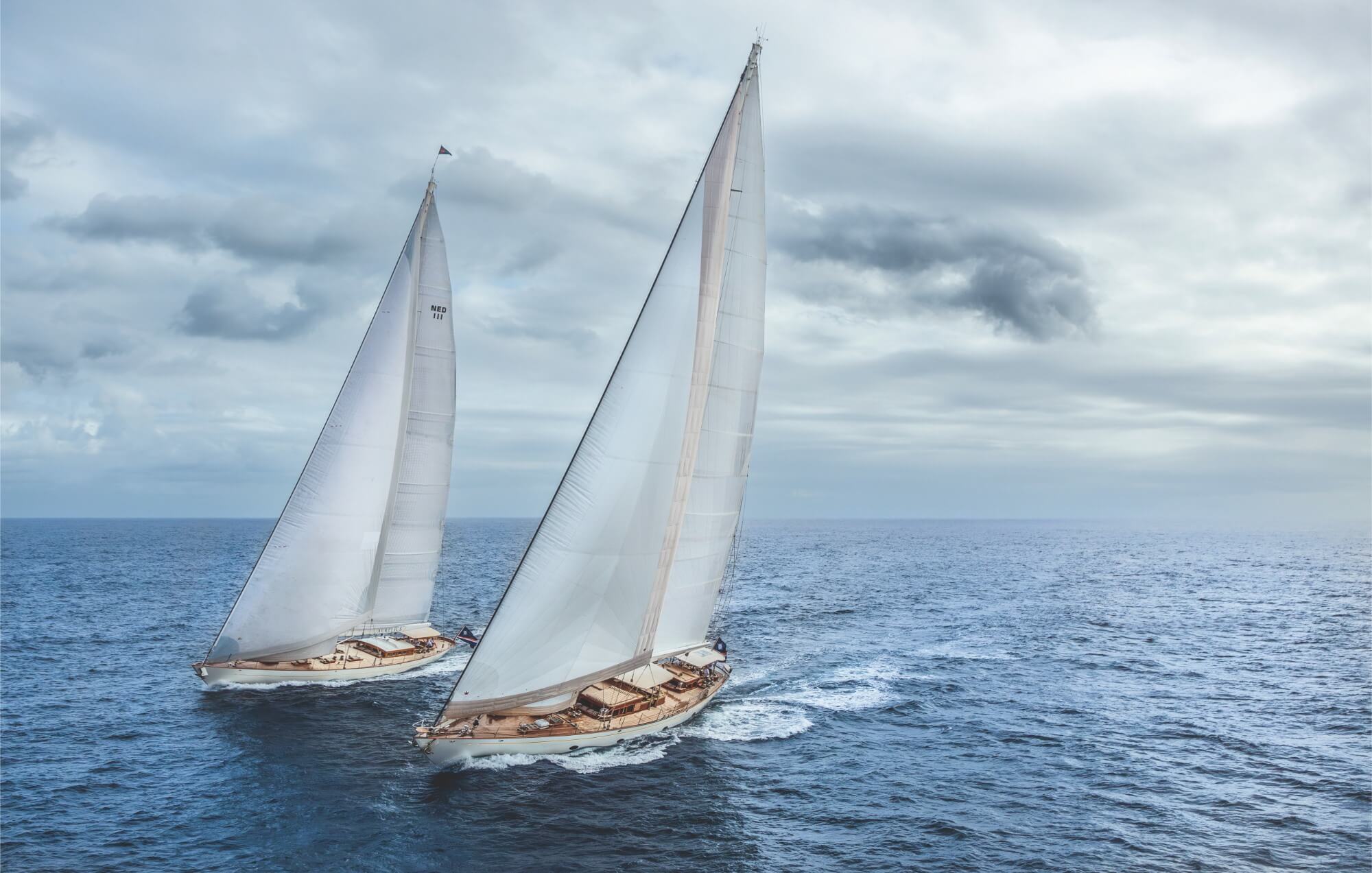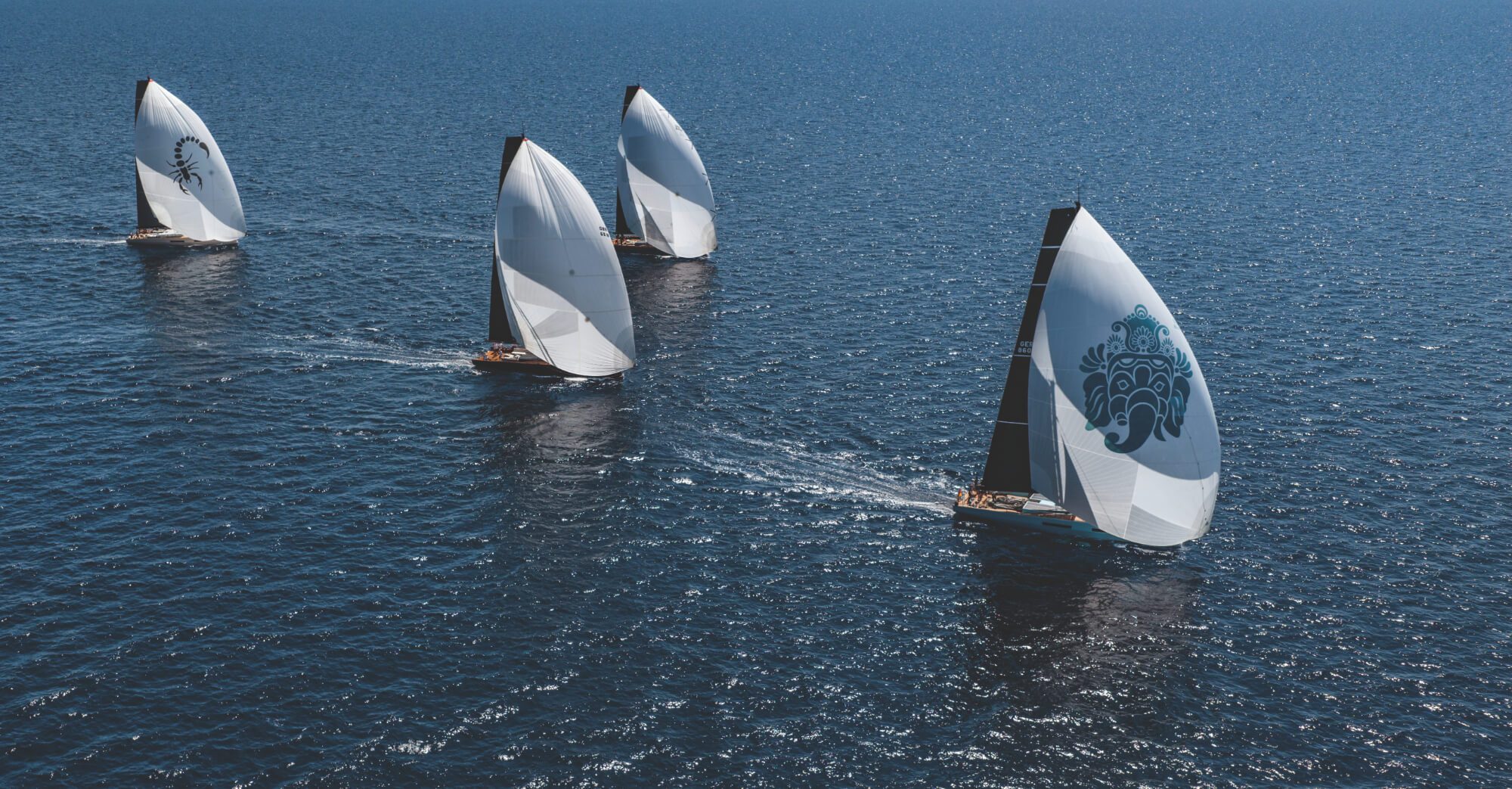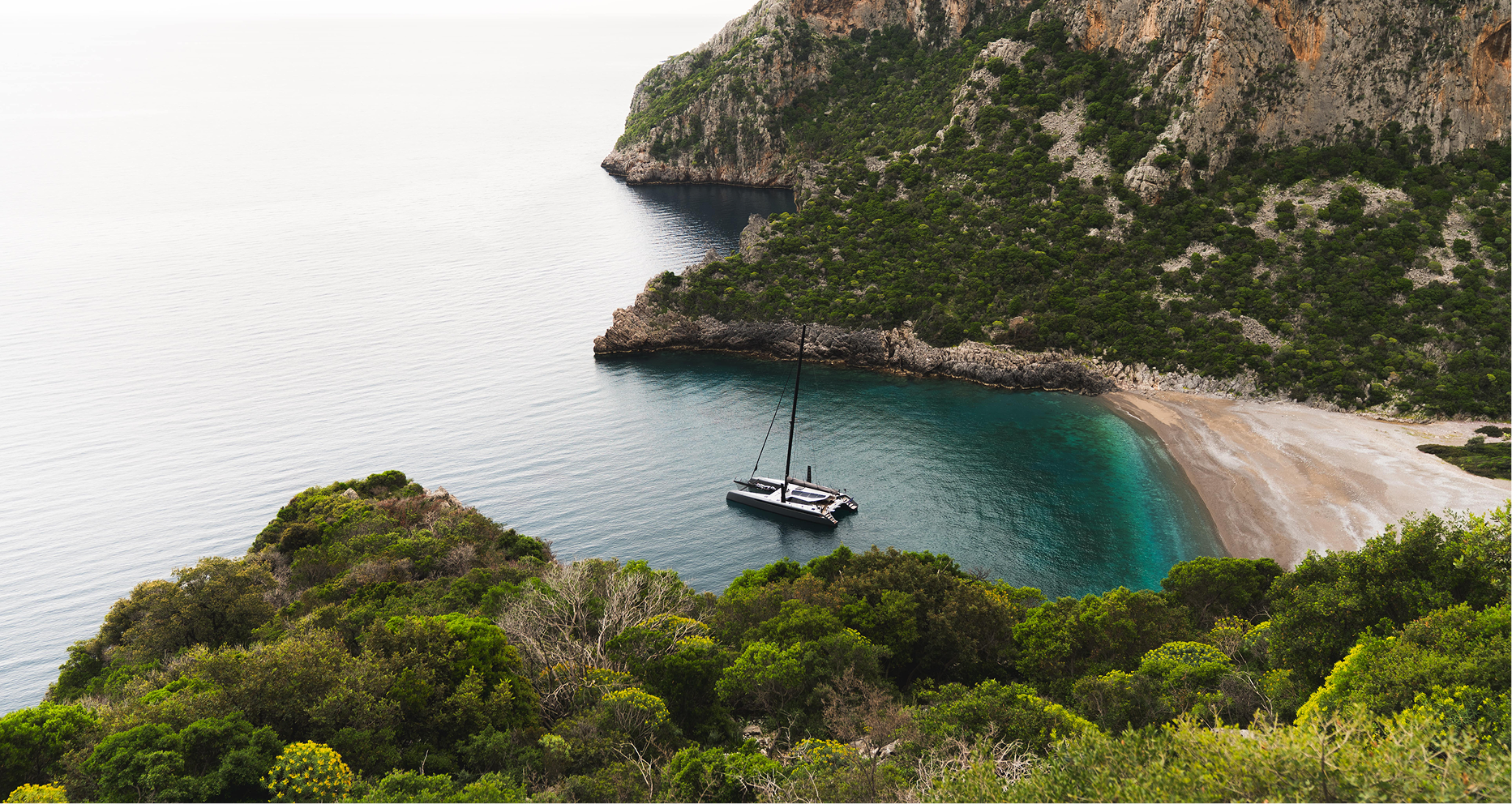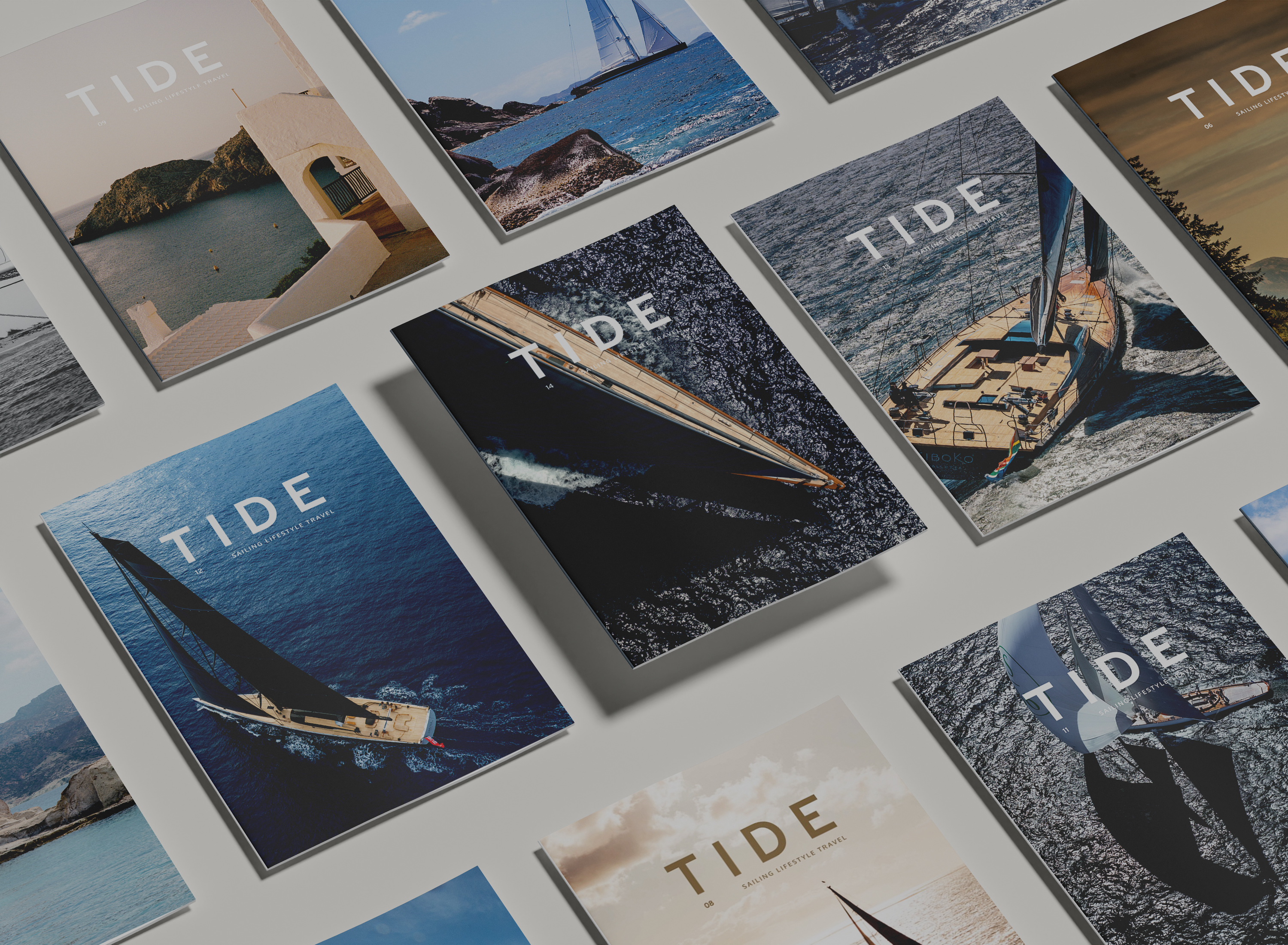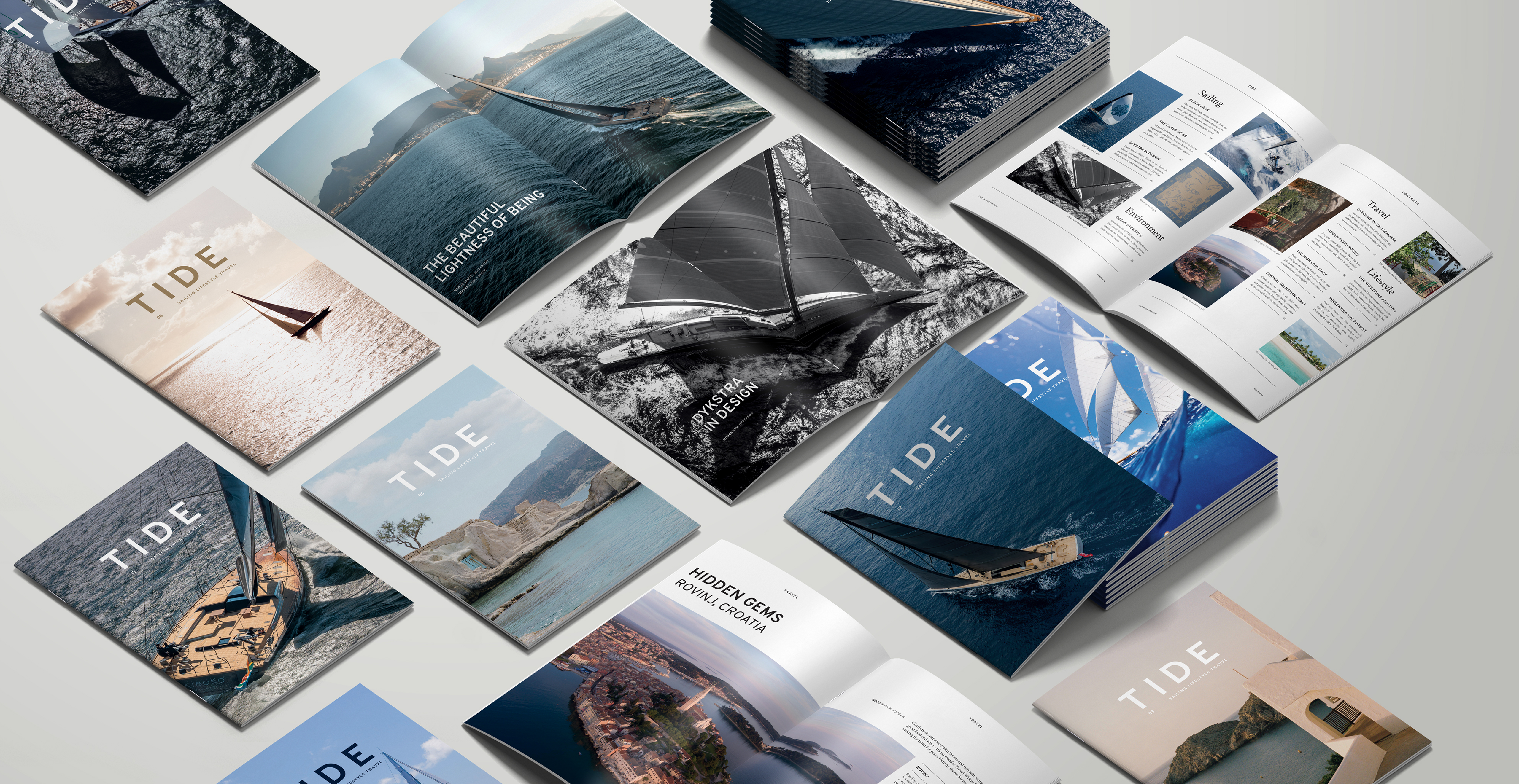This is the story of a couple of boat-owning sailors, plus two designers and – the main characters and plot – two extraordinary yachts and the sailing pleasure they bring. One of these remarkable sloops was built in Turkey, the other in the Netherlands, but they both share a classic look that is allied to distinctly modern handling, courtesy of what could be called the Dutch school of design. And TIDE shot each of them sailing off Nelson’s Dockyard, Antigua.
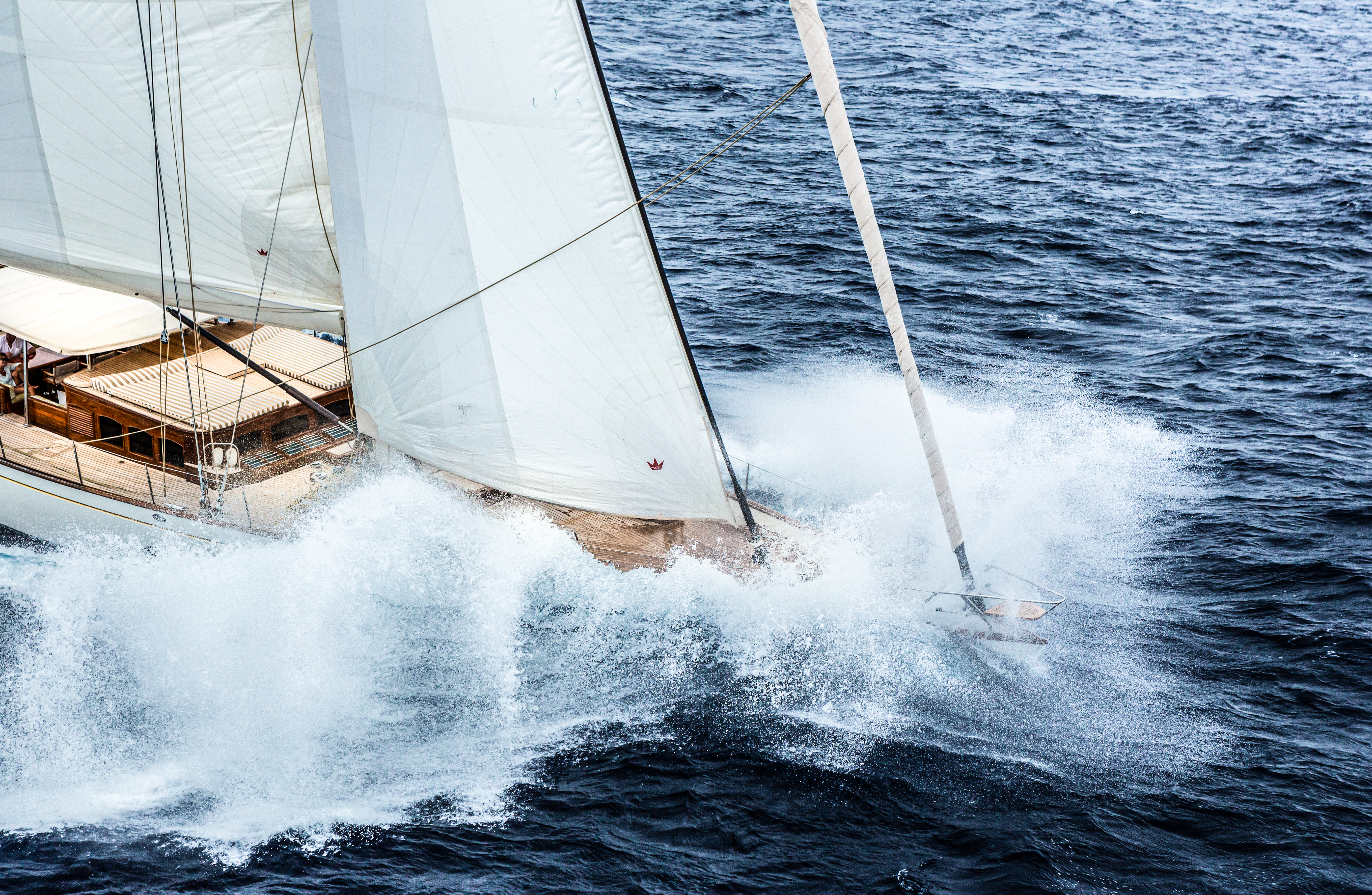
Namuun is the younger of the two (by a whisker), designed by André Hoek and built by Turquoise Yachts in 2012. She has recently passed into fresh hands with her purchase by British Antiguan and lifelong sailor, Charles Morgan. “Hoek does very beautiful sailboats, in my opinion, and they’re usually quick – proper sailboats,” he says. “Namuun ticked a lot of boxes: tremendous onboard accommodation, very comfortable on deck and above all very pretty!”
Morgan is, in a sense, trying to recapture the sailing exploits of his youth, which he still remembers with a singular passion. “I was slightly abandoned on the south coast of Cornwall as a child – I begged, borrowed and stole anything I could make float. I’ve always known that if I’m not near the sea then there’s something missing. As a young adult, I spent every penny I had on buying boats and fixing them up – sailing them and enjoying them.”
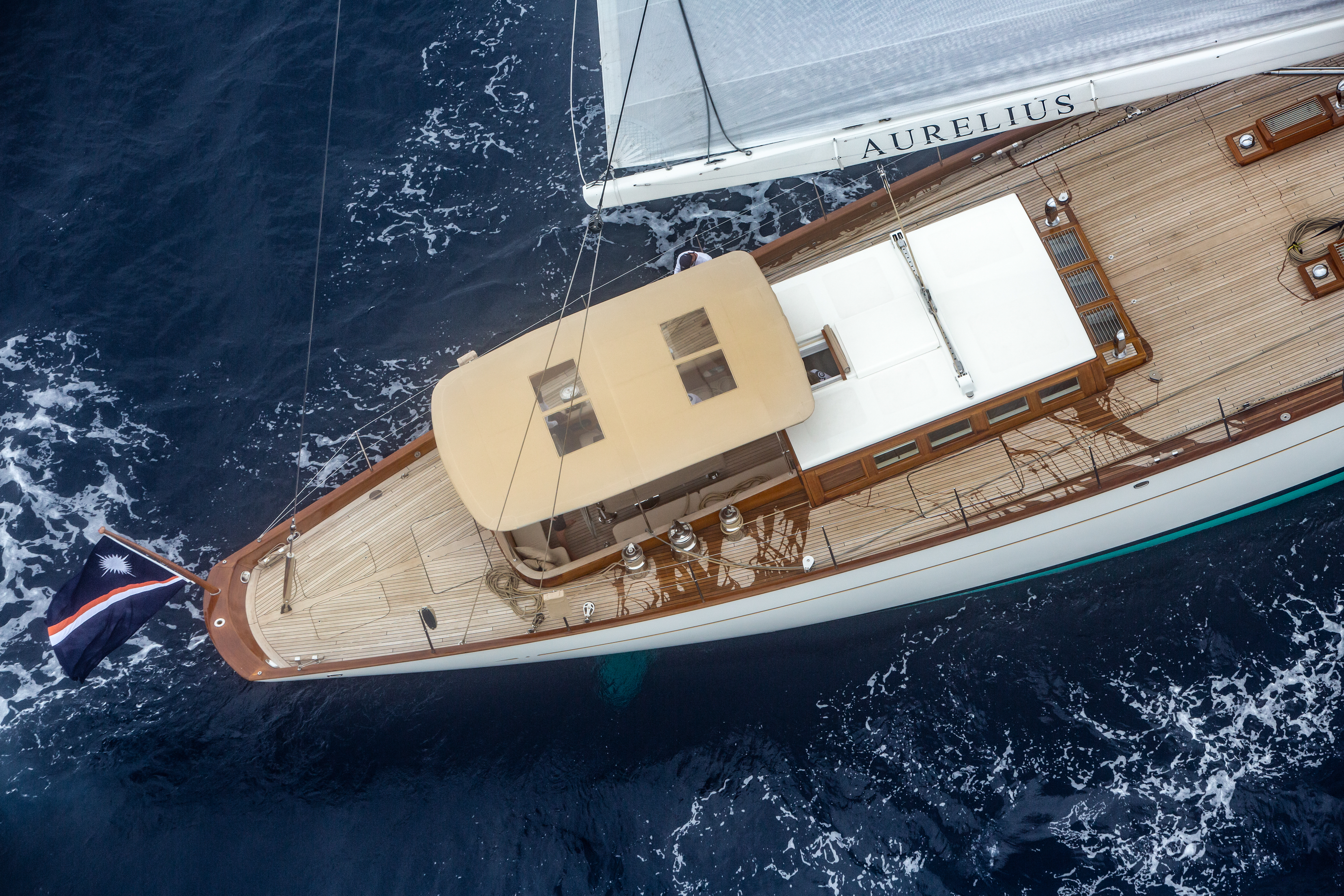
His first “real” boat came in his 20s, and was jointly owned and sailed with friends. She was a Bristol Channel pilot cutter – those lean, fast and above all seaworthy wooden craft that represented the epitome of fast boat design for generations. It is no coincidence that Namuun is an adaptation of those same timeless lines, as Hoek has made this his lifetime’s work. “There’s a direct correlation between my first boat and the one we’ve got now,” Morgan agrees.
Namuun had been with her first owner for a decade and, by 2022, she required some work – not least her 10-year survey. “We made some minor modifications and put in a lot more safety – particularly handholds,” Morgan says. “And we completely redid the interior. It’s all new materials – done by a design team from Holland and Los Angeles. We also completely renewed the instruments with B&G – Access Marine did a tremendous job.”
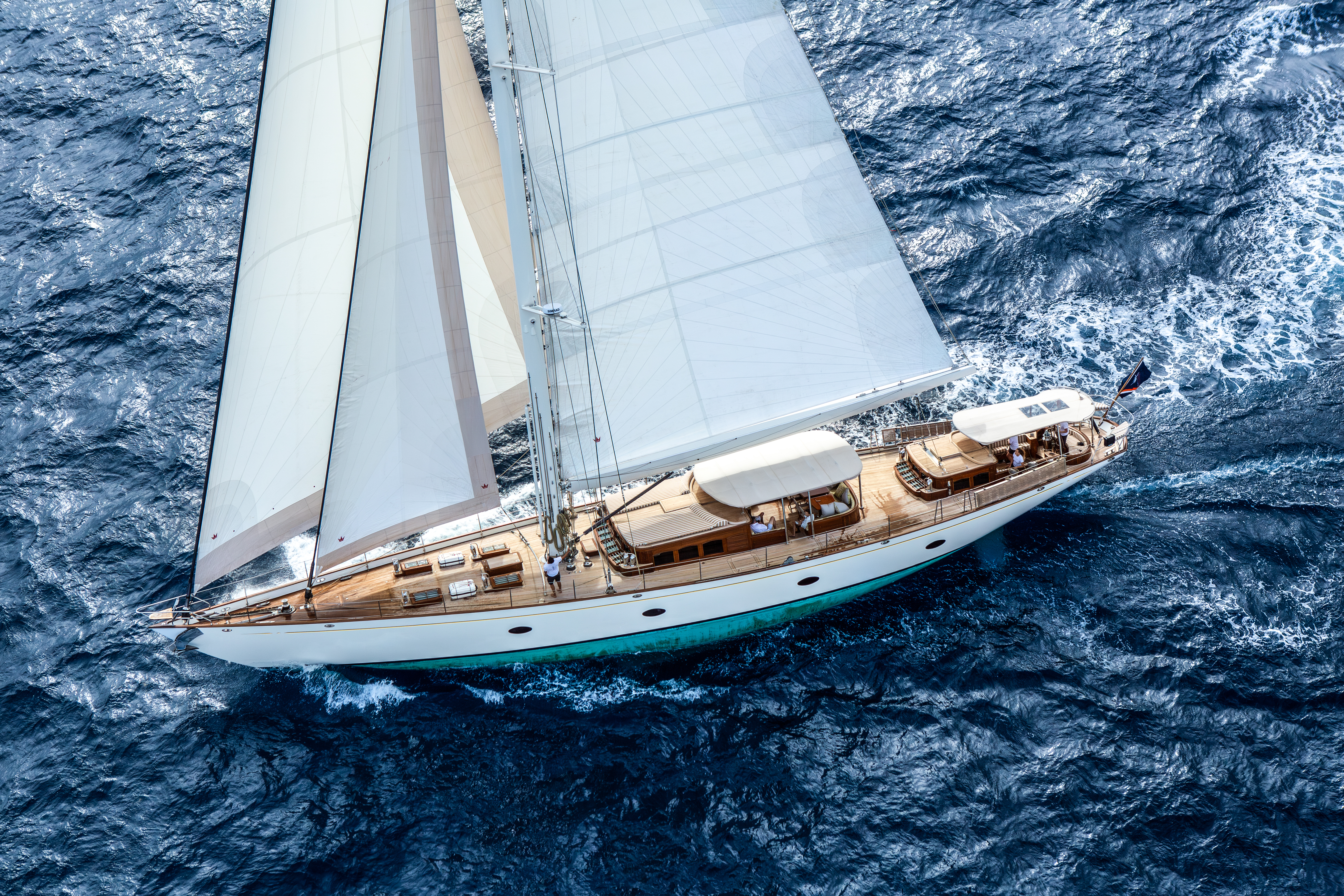
Little polishing was required to bring out Namuun’s sailing potential. “Considering that she’s a 120-tonne deadweight, she’s really lovely on the helm; very, very well balanced – she just picks up and goes,” he says. “We don’t have racing sails at the moment, so we’re happier on a reach, but she’s a super quick boat. We were in Turkey last summer doing 13-14 knots in flat water in about 18 knots of breeze.”
One of her rotation captains, Ted Street, says there is little point in renewing the sails until the winches are upgraded next season. “Otherwise, you’d be putting the cart before the horse,” he says. “A brand new main with a winch that is too slow in the gybe leaves you no better off. But if I can trim on the new sheet quicker than you, then I’ll pick up speed faster.”
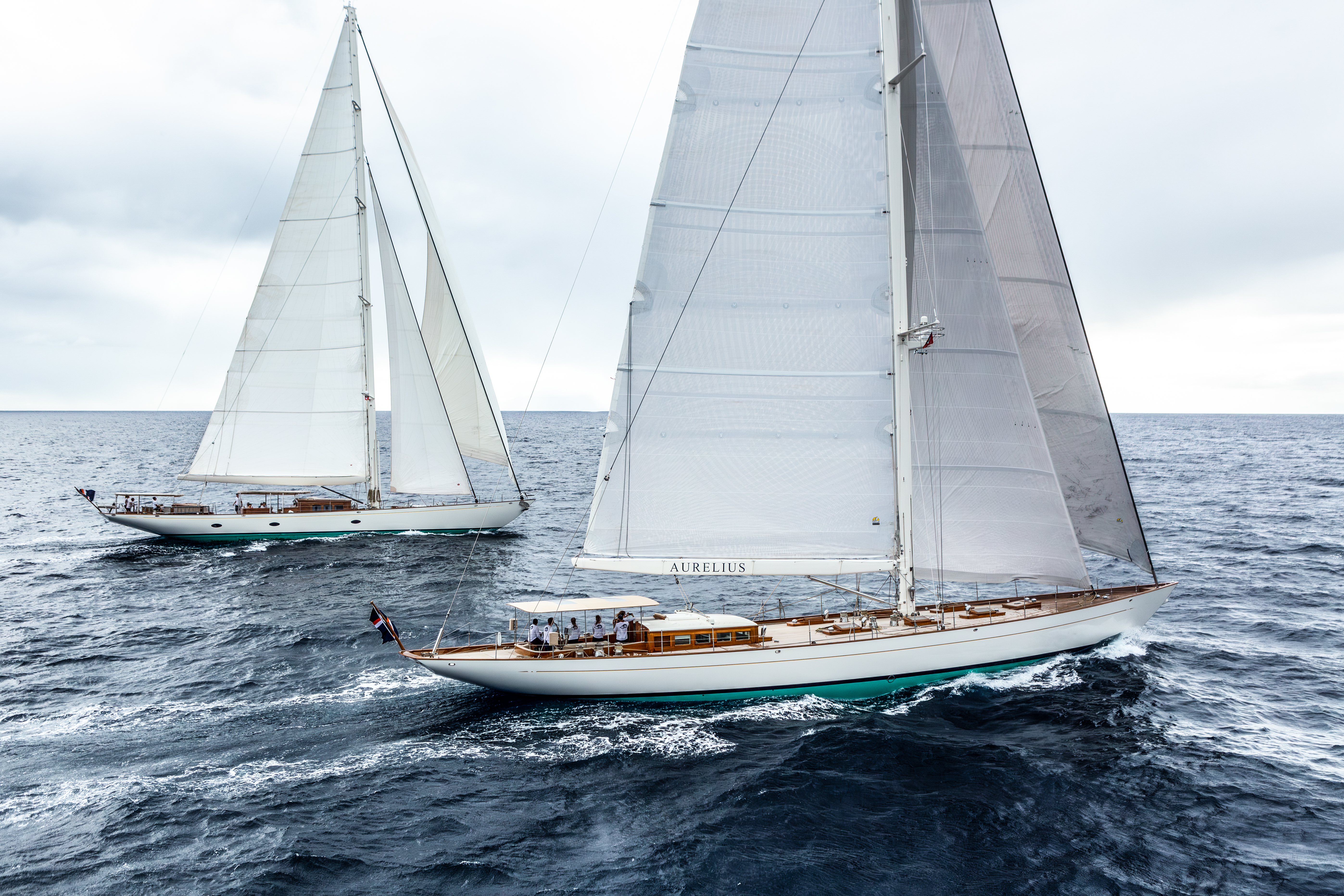
Street was born with sailing in his blood and appreciates Namuun’s qualities. “She’s quite sensitive in the helm, which I like,” he says. “But when she’s trimmed right, she’s feather light and slab reefing means that she’s easy to balance.” That’s handy in her Antiguan home waters, where the winds tend to be stronger and big Atlantic swell rolls in endlessly from the east.
I ask Morgan whether he’s put the boat through her Caribbean paces yet. “No, of course not!” he chuckles. “Do you think I’m completely bonkers? I like fair- weather sailing – a glorious beam reach with the sun all around me and dolphins at the bow.” All the same, Namuun and her crew will be put to the test soon enough. They are competing in the St Barths Bucket this year, which should pit them against wind and swell, as well as a host of other big yachts, including several J-Class and the 75m sloop M5.
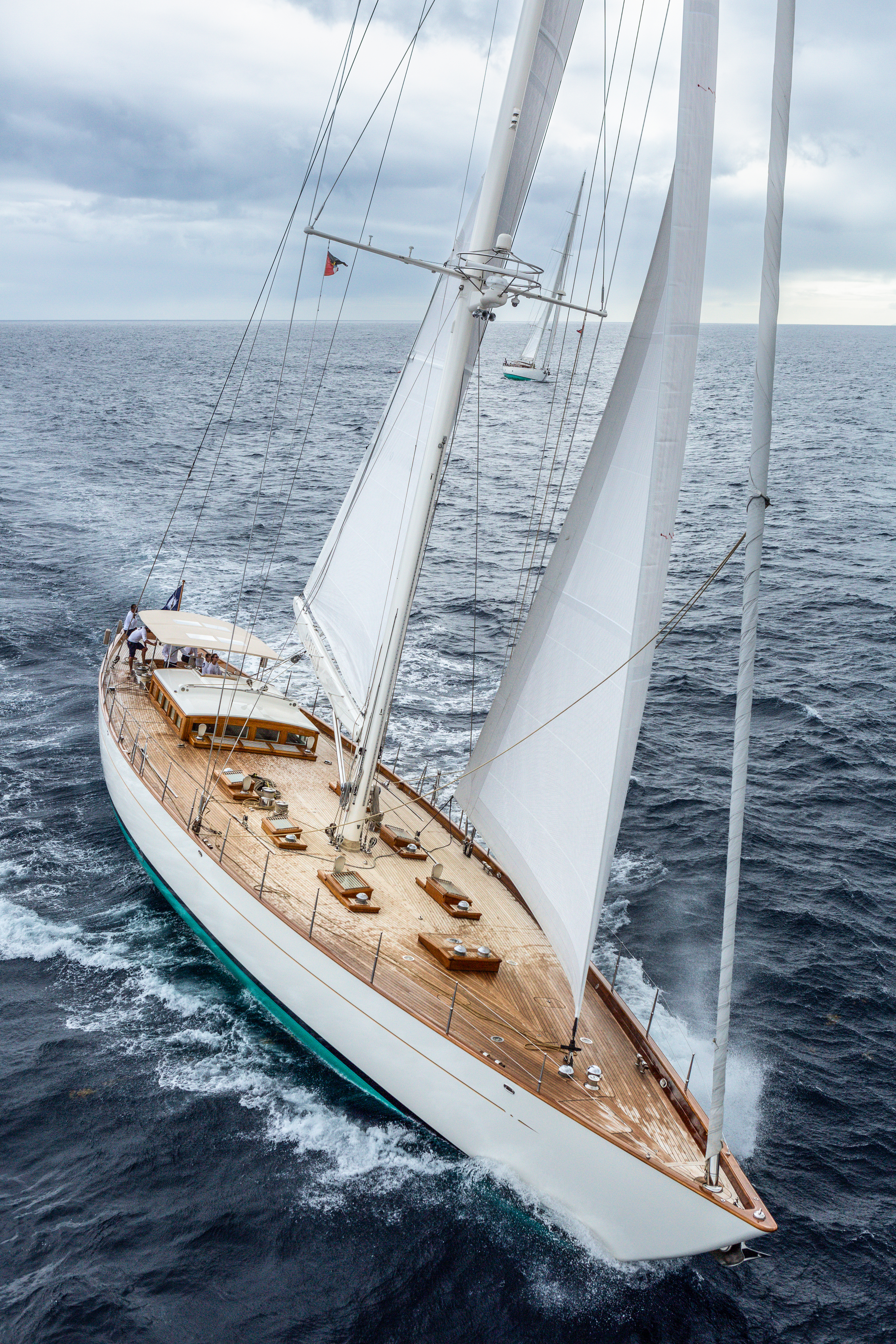
Also there in St Barths, likely competing in the same class as Namuun, will be Aurelius – the second of our two modern classics. She is a serious rival, and not just due to her few extra feet of waterline length. Aurelius was developed with extremely efficient underwater geometry and a fluid deck layout for racing by the same team at Dykstra who breathed life into the new generation of J-Class racers. They have a natural feel for performance and race handling.
Her Dutch American owner, Daniel van Starrenburg, is no less passionate about the joys of sailing, having grown up in and around boats. There was a hiatus while he helped to build SavaTree. Then his adult sailing career got under way with a stripped-down 50ft Derecktor racer – all grinders and elbow grease. But when van Starrenburg’s first child was born, he realised that something more family friendly would be necessary and he bought a 76ft Bestevaer from a man who was building a bigger 111-footer for himself. Then the build owner got cold feet and offered to sell the bigger yacht to van Starrenburg instead.
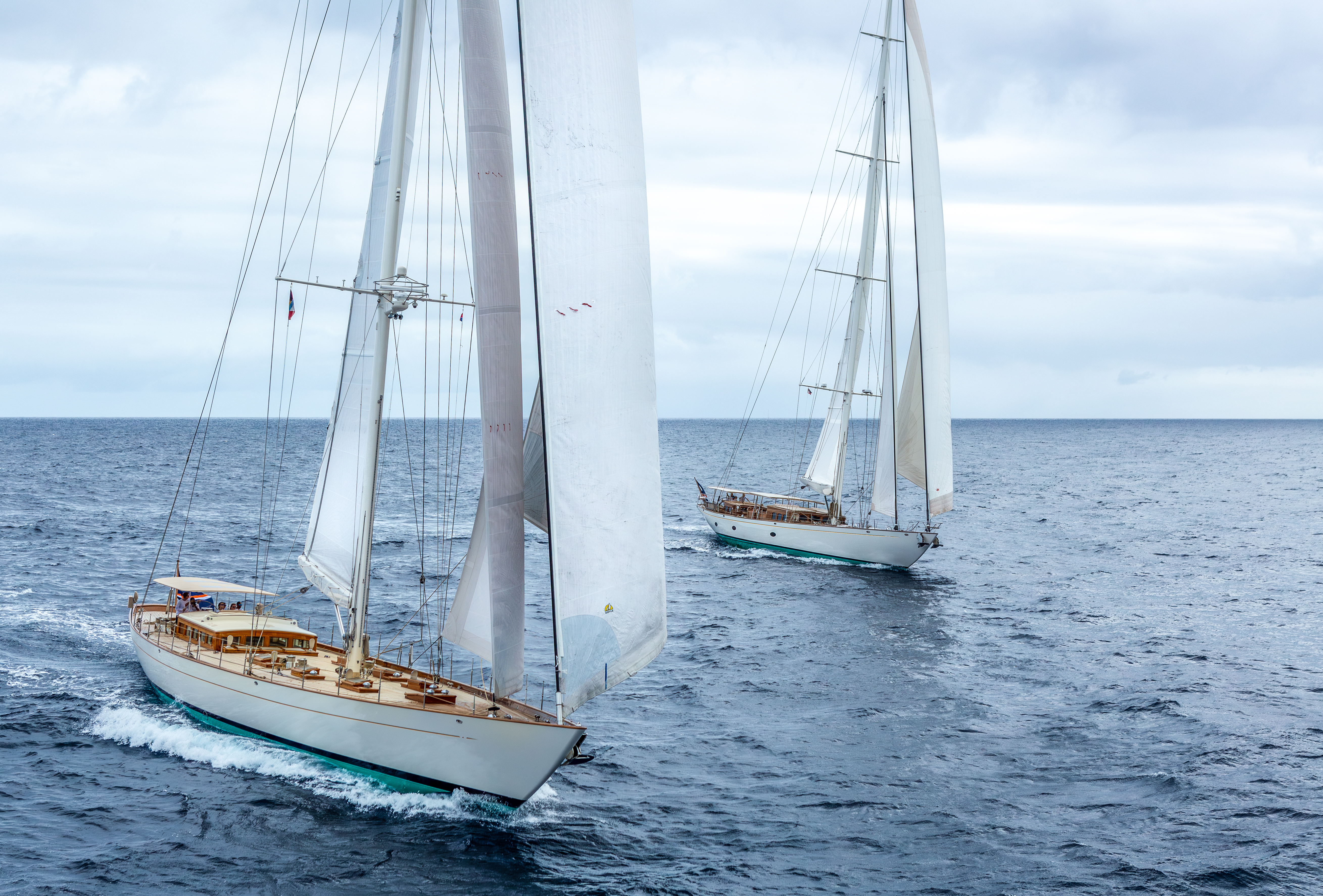
“We came to an agreement and I was ecstatic – super excited by the prospect of upgrading to this larger yacht,” he says. “She was faster, had more tonnage to push through the waves, and an incredible sail plan. I flew down to Nice, took her out and had a phenomenal sail. She just sails unbelievably well! There’s lots of beautiful yachts in the world – but there aren’t a lot of cruising yachts that sail well. Fast, nimble – she drives like a Ferrari!”
He has owned Aurelius since 2011, playing between the US East Coast, the Caribbean and latterly the Mediterranean. Together, they have covered many thousands of miles, with a number of Newport to Bermuda races, Les Voiles de St Tropez as well as the Bucket. He also took advantage of a recent yard session to make some changes, under the watchful eye of his long-term captain, Harry Blazeby.
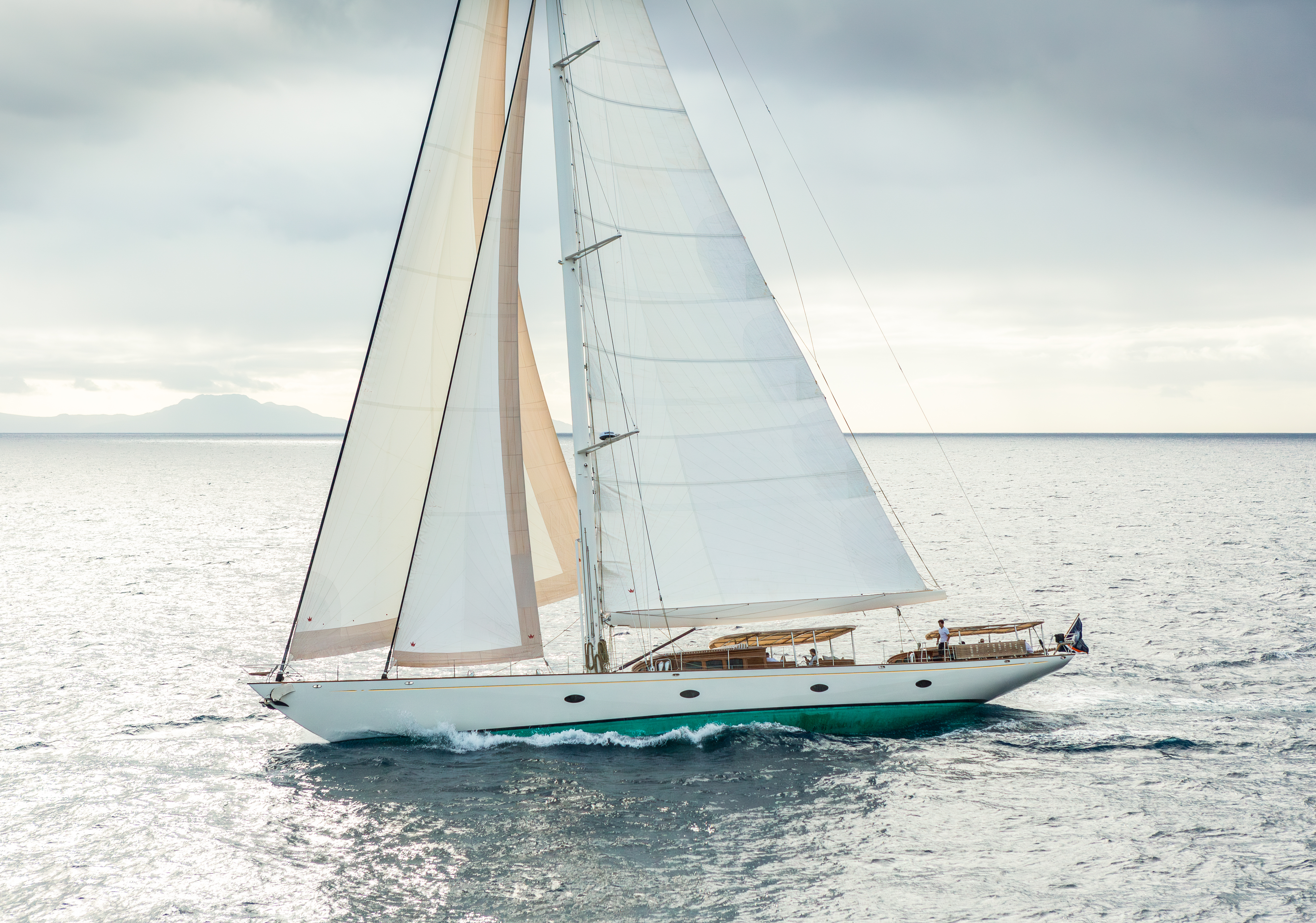
“We pulled the rig and did a full service,” Blazeby tells me. “We got new Doyle sails – main and staysail. But one of the best upgrades was to convert her inner forestay to a permanent furling staysail. It just means that it’s much easier to change gear from the big Yankee down to the smaller staysail, bringing the centre of effort much further aft and closer to the mast. The boat becomes so much easier on the helm and it reduces the weather-helm and the heeling angle. In Caribbean tradewind conditions, we used to be overpowered a lot, burying the side-rail – that’s great for excitement but not so good for the boat.”
Interestingly, though, it was in very light wind conditions that Aurelius produced one of her strongest ever performances. Van Starrenburg is
still reeling from the thrill of winning last year’s Ibiza Joy Sail, which he describes as one of the best-kept secrets on the yachting calendar. “We only had 5-6 knots of wind – in my head I thought we’d have to write it off,” he says. “But we managed to get and maintain boat speed – it was incredible to perform so well in those extremely light airs. All my other regattas had more or less been in heavy winds – a testament to how well she was built.”
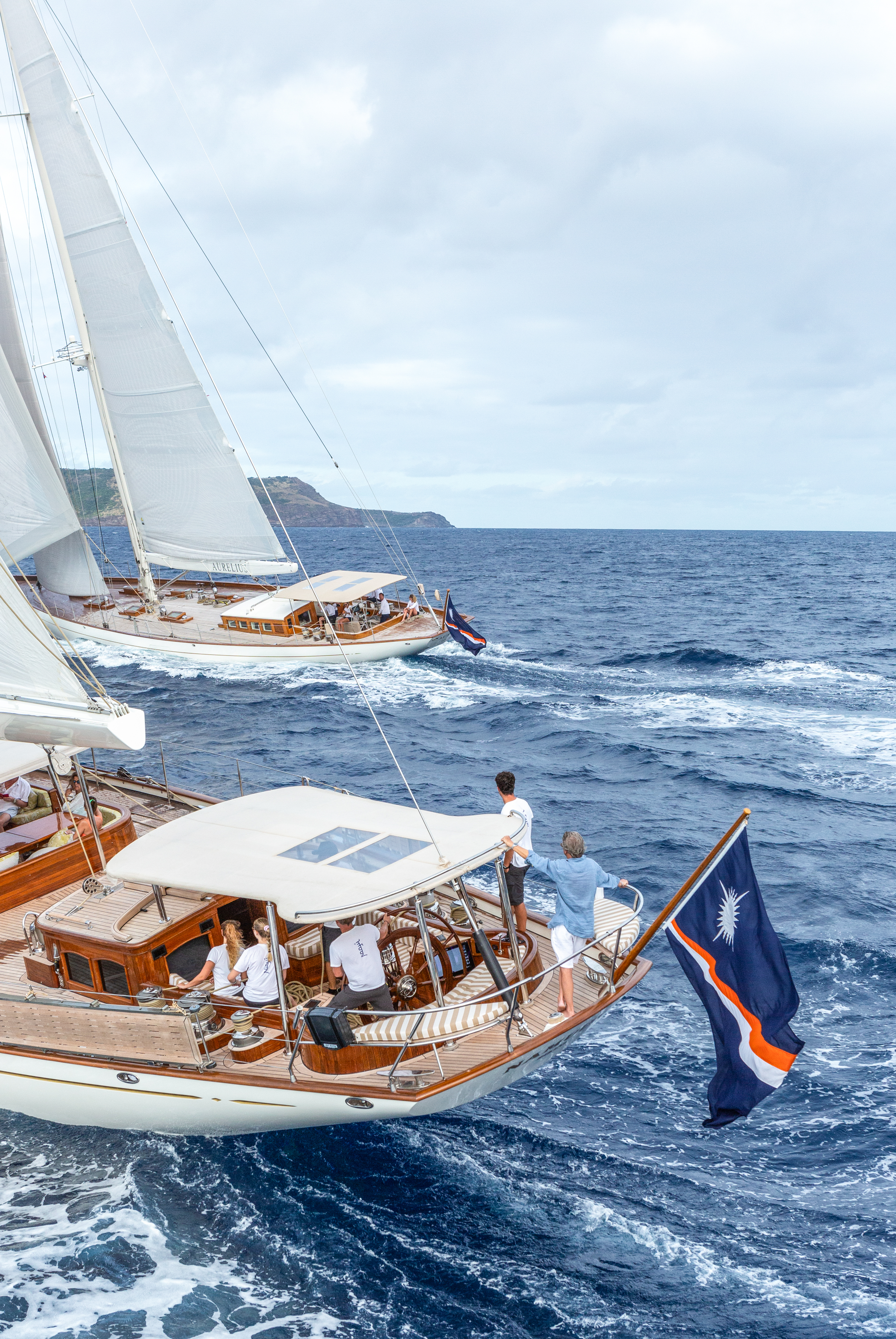
It means that hopes are high for the St Barths Bucket. “Considering how competitive we were in Ibiza, we expect at least to get a top three in something,” says van Starrenburg. “But they also have some funky prizes – so we’d settle for top three in any of the categories! We’re also sober enough to know it’s all about having a great time and camaraderie with the other yachts. I’m not too fanatic about it.”
There are no finer designers of sailing boats that combine classic looks with cutting-edge performance than Dykstra and Hoek. Usually built in aluminium, they are grandes dames above the waterline and hydro-dynamic rockets below it – Rolls Royce meets McLaren. Their owners and crews know that they are capable of stand-out performances – and the rest of us are content to watch. Or you can perhaps do both – control the yacht and marvel at it simultaneously – as Namuun’s owner says wistfully: “I know I’ve got a boat that’s really pretty if I’m in the tender and I can’t help looking back.”


